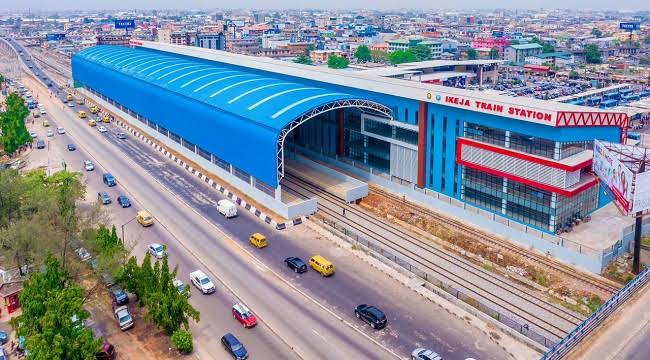The unveiling of the Lagos Rail Mass Transit Red Line Project marks a pivotal moment in Nigeria’s journey towards modern and efficient urban transportation.

Spanning 37 Kilometres from Agbado in Ogun State to Oyingbo in Lagos State, this ambitious project promises to revolutionize commuter experiences while addressing pressing challenges such as traffic congestion and road safety. With construction of the first phase commencing on April 15 2021, completing this project 30 months later is a major feat.
At its core, the Lagos Rail Mass Transit embodies a forward-thinking approach to urban development. With eight strategically located stations, including key hubs like Ikeja, Oshodi, and Yaba, the line seamlessly integrates with existing transportation networks, facilitating smoother connectivity for millions of commuters.
Moreover, the construction of 10 vehicular overpasses and pedestrian bridges shows commitment to safety and efficiency, ensuring the uninterrupted flow of train, road and pedestrian traffic.
With the capacity to cover the distance from Agbado to Oyingbo in a mere 40 minutes—a significant improvement over the more than two-hour journey by road, the carrying capacity per trip is equally impressive.
Governor Babajide Sanwo-Olu highlighted that at full capacity, the Lagos Rail Mass Transit is expected to transport 250,000 passengers daily. This figure is anticipated to surge to 750,000 daily passengers once the line is fully operational and all additional rolling stock is integrated into the system.
Managed by the Lagos Metropolitan Area Transport Authority (LAMATA), the Red Rail Line represents a significant investment in Lagos state infrastructure, with initial estimates pegging the cost at $135 million (this was as of 2011). While the project has faced funding and prioritization challenges, Governor Babajide Sanwo-Olu’s recent revelation of a combined budget exceeding ₦100 billion for both the red and blue rail demonstrates a steadfast commitment to its completion despite the upheaval.
One of the most noteworthy aspects of the Red Line is its use of the Diesel Multiple Unit (DMU) system. Unlike the electric-powered Blue Line, the Red Line’s diesel-powered trains offer a flexible and cost-effective solution that aligns with the project’s objectives and operational requirements. This strategic choice enhances reliability and ensures the viability of the rail network in diverse operational conditions.
Beyond its immediate benefits, the Lagos Rail Mass Transit Red Line holds the potential to catalyze broader socio-economic development. By reducing travel times, easing congestion, and enhancing accessibility to employment and educational opportunities, the project empowers individuals and businesses alike. Moreover, its environmental impact cannot be understated, as fewer cars on the road translate to reduced emissions and improved air quality for all.
At the centre of all these lies visionary leadership, sustained investment, and robust public-private partnerships. President Bola Ahmed Tinubu who cast the vision of the intracity rail lines 20 years ago laid it bare at the commissioning.
In his words at the commissioning, the President said “Governor Babajide Sanwo-Olu was part of the vision 20 years ago. I sent them to other countries when I was governor to look at the systems that work. I am delighted as we inaugurate the first phase of the Red Rail line today. We cannot afford to rest on our oars. I look forward to the commissioning of the other phase too.”
The Lagos Rail Mass Transit represents a beacon of hope and progress in Nigeria’s quest for modern, efficient, and accessible urban transportation. As it takes its place among the country’s most ambitious infrastructure projects, it is poised to redefine the way people move, work, and live in the bustling metropolis of Lagos and beyond.
In Sanwo-Olu’s Lagos, such accomplishments are increasingly frequent, marking a remarkable innovation and as the nation’s commercial hub, it is crucial that Lagosians have access to diverse and safe transportation options.